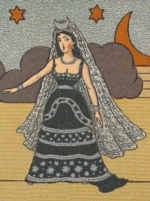
Missing footage of Theremin at Stanford found
Earlier this year, I reported on recent work the Archive of Recorded Sound (ARS) had undertaken to preserve video footage of Leon Theremin's visit to Stanford in 1991. In addition to participating in a symposium during his visit, hosted by the Center for Computer Research in Music and Acoustics (CCRMA), Theremin was also the guest of honor at a concert held in Frost Amphitheater on September 27, 1991 during the Stanford Centennial Finale Weekend. The video footage preserved by the ARS earlier in the year unfortunately only included part of this notable concert. It was found to be missing some key performances, including an arrangement of Rachmaninov's Vocalise, featuring Theremin's daughter Natasha Theremin playing the vocal parts on her father's instrument, accompanied by Max Mathews conducting the orchestral parts with his radio batons. This footage was presumed lost...until now.





